Spain is a paradise for food lovers, offering a diverse culinary landscape that ranges from rustic village dishes to sophisticated urban gastronomy.To begin with, this guide will explore the best food experiences Spain has to offer, featuring insights from SAZON THE FOLK COOK, which connects visitors with authentic local culinary experiences. Whether you’re a seasoned gourmet or a curious traveler, this guide will help you discover the true flavors of Spain.
Traditional Spanish Cuisine
When it comes to traditional Spanish cuisine is characterized by its use of fresh, high-quality ingredients and traditional cooking techniques. Key components include olive oil, garlic, fresh herbs, and locally sourced produce. Popular dishes include paella, tortilla española, gazpacho, and jamón ibérico. Notably, Spanishcuisine reflects its diverse regions, each contributing unique ingredients and cooking methods to the rich tapestry of national dishes.
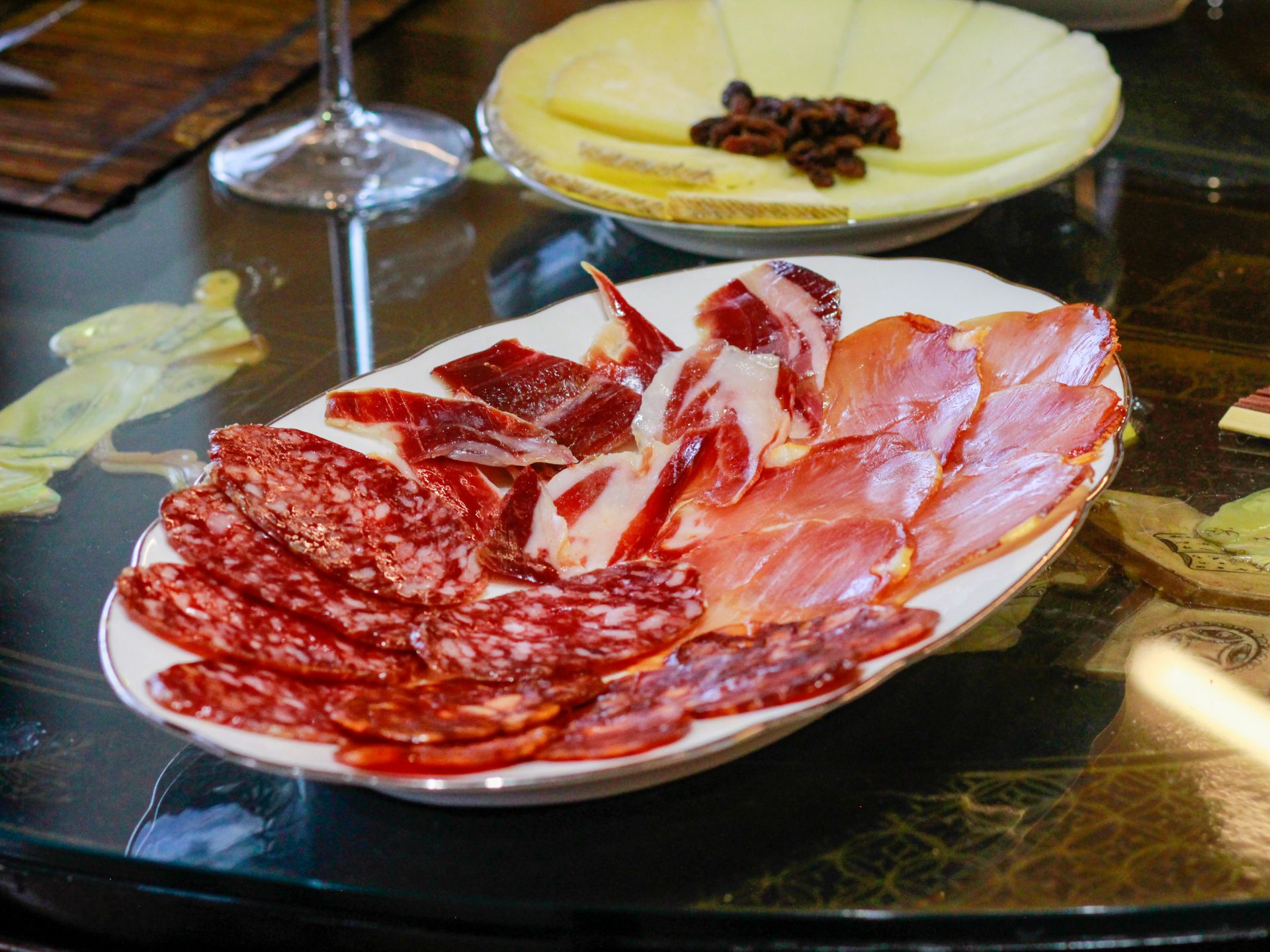
Ingredients in Traditional Spanish Dishes
The foundation of Spanish cuisine lies in its fresh and high-quality ingredients. Olive oil is a staple, used generously in cooking and as a finishing touch. Garlic and onions are fundamental in many dishes, providing a robust base of flavor. Fresh herbs like parsley, rosemary, and thyme are commonly used to enhance the taste of meats and vegetables.
Spanish cuisine also showcases a wide variety of fresh produce. Tomatoes, bell peppers, and eggplants are frequently used in stews and salads, while potatoes are a key ingredient in dishes like tortilla española. Legumes such as chickpeas and lentils are staples in soups and stews, providing a hearty and nutritious component.

Cooking Techniques in Spanish Cuisine
Traditional Spanish cooking techniques are passed down through generations, preserving the authentic flavors of each region. In particular, sautéingand frying are common methods used to prepare vegetables and meats. The sofrito, a sautéed mixture of onions, garlic, and tomatoes, is the flavor base for many Spanish dishes, including paella and stews.
Meanwhile, slow-cooking is another technique that allows the flavors of ingredients to meld together. Dishes like cocido (a hearty meat and chickpea stew) and fabada asturiana (a bean stew with pork) are simmered for hours, resulting in rich and satisfying meals. Likewise, grilling is also popular, particularly for seafood and meats, imparting a smoky flavor that enhances the natural taste of the ingredients.
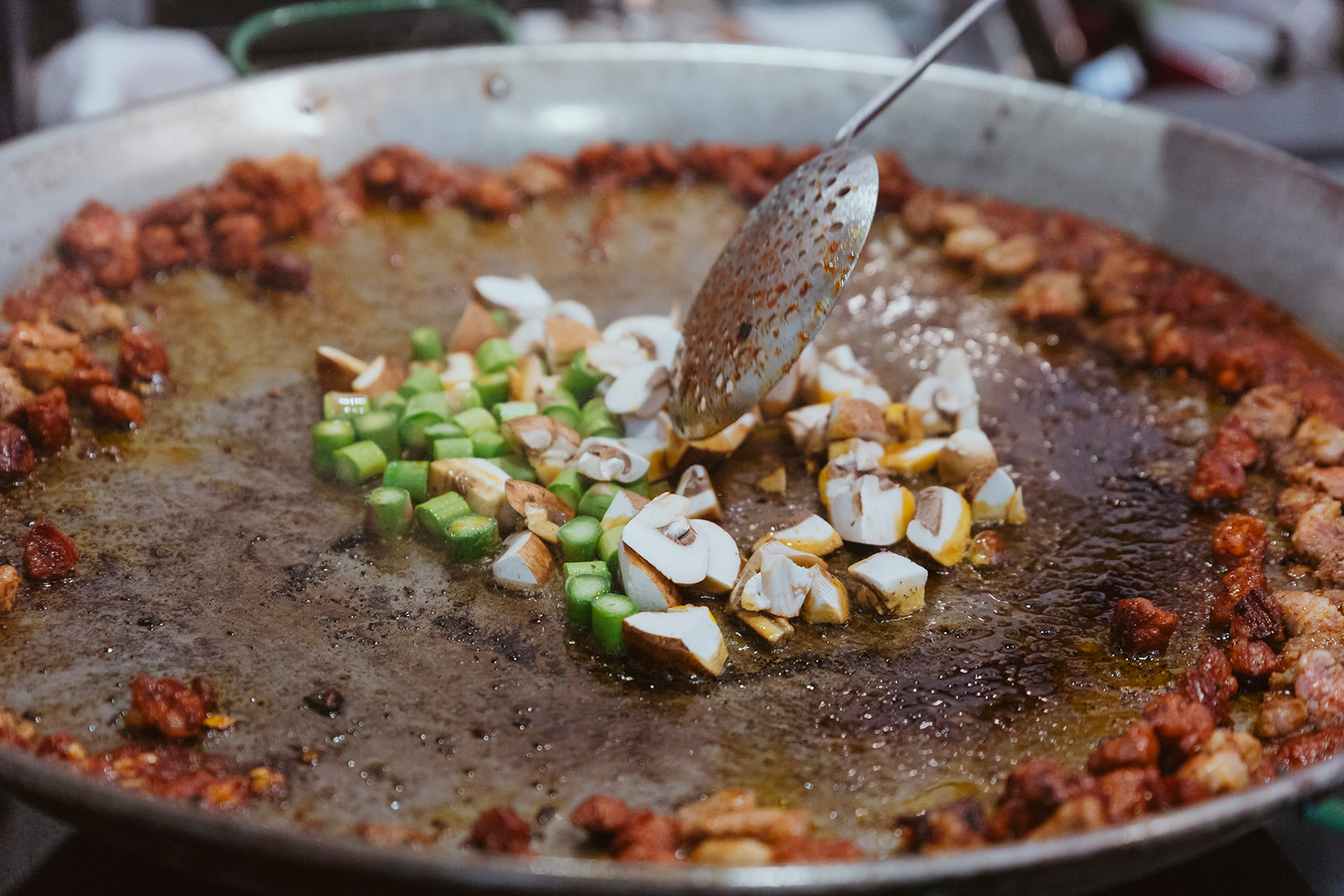
Top Regional Dishes
Each region of Spain has its own culinary specialties, reflecting the local produce and cultural influences:
Andalusia: Offers refreshing gazpacho (cold tomato soup) and pescaito frito (fried fish), Andalusia’s cuisine reflects its Moorish heritage. The region’s warm climate is perfect for growing olives, and aceitunas de Sevilla (Seville olives) are renowned for their quality. Andalusia is also known for its jamón ibérico (Iberian ham) and sherry wines from Jerez, which pair beautifully with the local tapas.
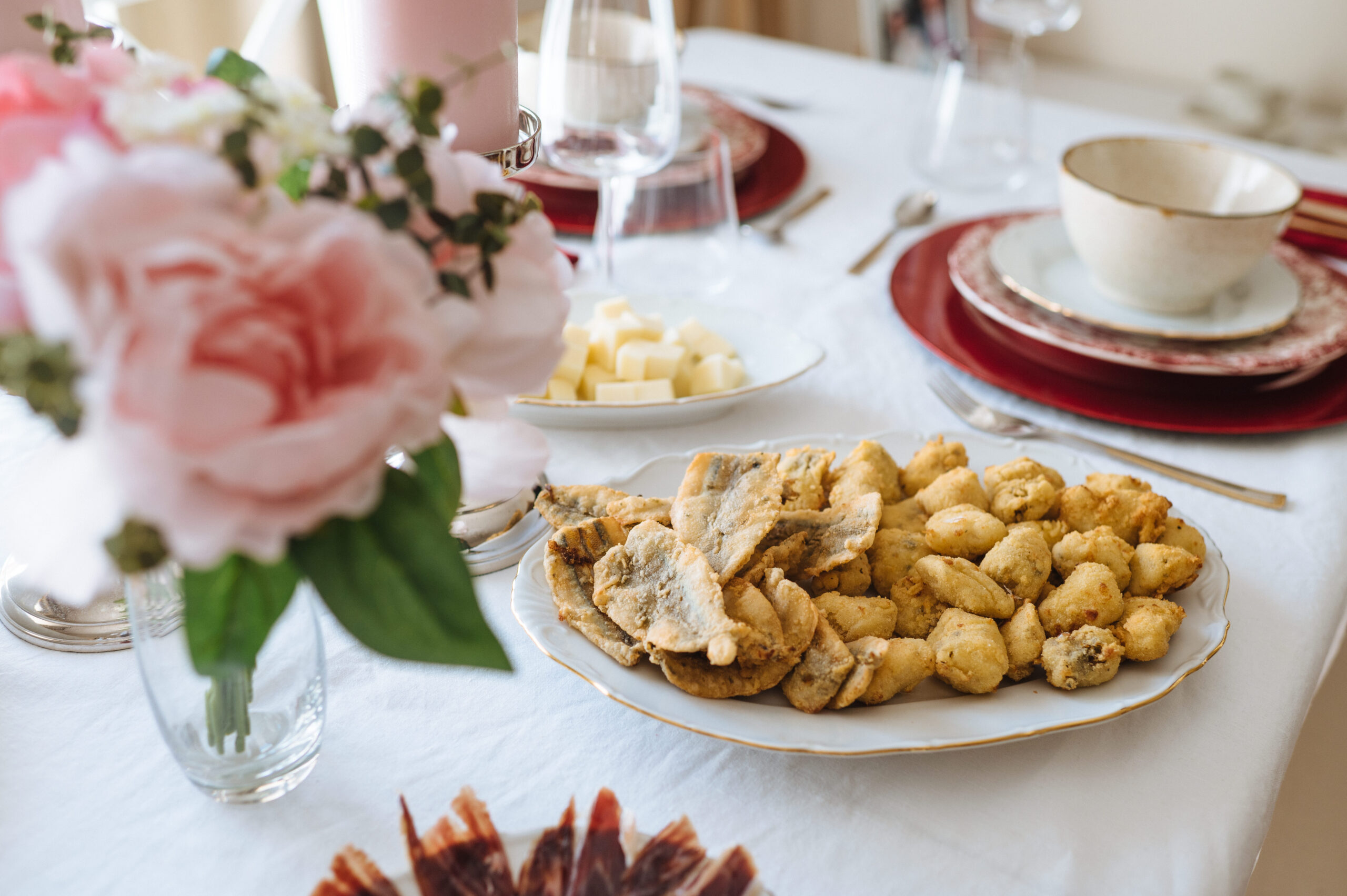
Valencia: Primarily famous for paella Valenciana made with rabbit and chicken, Valencia’s cuisine is a celebration of the region’s agricultural abundance. The use of bomba rice in paella ensures a perfect texture, absorbing the flavors of saffron and meat or seafood. Additionally, Valenciais also known for its refreshing horchata (a drink made from tiger nuts) and fideuà (a noodle dish similar to paella, often made with seafood).
Catalonia: Similarly, knownfor escalivada (roasted vegetables) and crema catalana (a dessert similar to crème brûlée), Catalonia’s cuisine is influenced by its coastal location and proximity to France. Moreover, the region is famous for its use of seafood, with dishes like suquet de peix (fish stew) showcasing the fresh catch from the Mediterranean. Botifarra (a type of sausage) and calcots (grilled green onions) are other Catalan delicacies enjoyed during seasonal festivals.
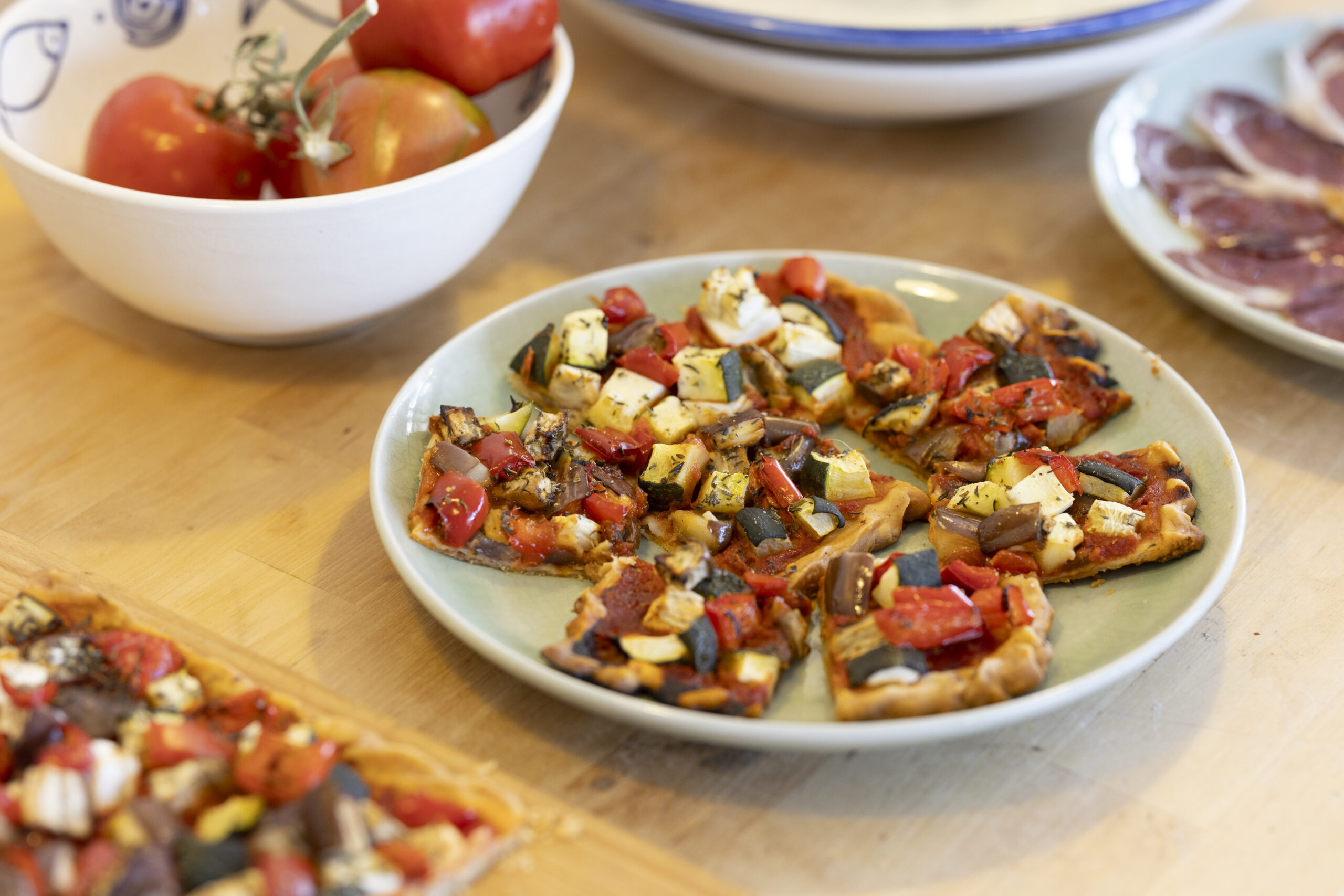
Basque Country: Renowned for pintxos (small snacks) and bacalao a la vizcaína (cod in tomato sauce), the Basque Country boasts a rich culinary tradition with a focus on high-quality ingredients. The region’s coastal location provides an abundance of seafood, while the fertile inland areas produce exceptional vegetables and meats. Basque cuisine also features txakoli (a slightly sparkling white wine) and idiazabal (a sheep’s milk cheese).
Exploring Spanish Markets
Visiting local markets is a must for any food lover. Notably, famousmarkets include La Boqueria in Barcelona, Mercado de San Miguel in Madrid, and Mercado Central in Valencia. These markets offer a variety of fresh produce, seafood, meats, and cheeses, providing a true taste of Spanish culinary culture.
La Boqueria, Barcelona: Located on Barcelona’s bustling La Rambla, La Boqueria is one of the most famous markets in Spain. Dating back to the 13th century, this vibrant hub offers a wide range of products from fresh seafood and meats to exotic fruits and spices. For example, visitors can sample tapas at the market’s many bars or purchase ingredients to cook their own Spanish feast.

Mercado Central, Valencia: One of the largest markets in Europe, Mercado Central in Valencia is housed in a stunning modernist building. Indeed, the market is a food lover’s paradise, with over 1,000 stalls selling fresh produce, seafood, meats, and artisanal products. Visitors can explore the market’s different sections, each dedicated to specific types of food, and enjoy the vibrant colors and aromas of Valencia’s culinary offerings.
Mercado de San Miguel, Madrid: This historic market in the heart of Madrid is known for its gourmet food stalls and lively atmosphere. A popular destination for both locals and tourists, the market offers a variety of traditional Spanish delicacies such as jamón ibérico, croquettes, and paella. Moreover, wine lovers will appreciate the extensive selection of Spanish wines available by the glass.

Dining with Local Chefs
Thanks to SAZON THE FOLK COOK, you can now enjoy authentic Spanish meals prepared by local chefs in their homes. This unique dining experience allows you to savor traditional dishes while learning about the local culture and culinary traditions directly from the experts.
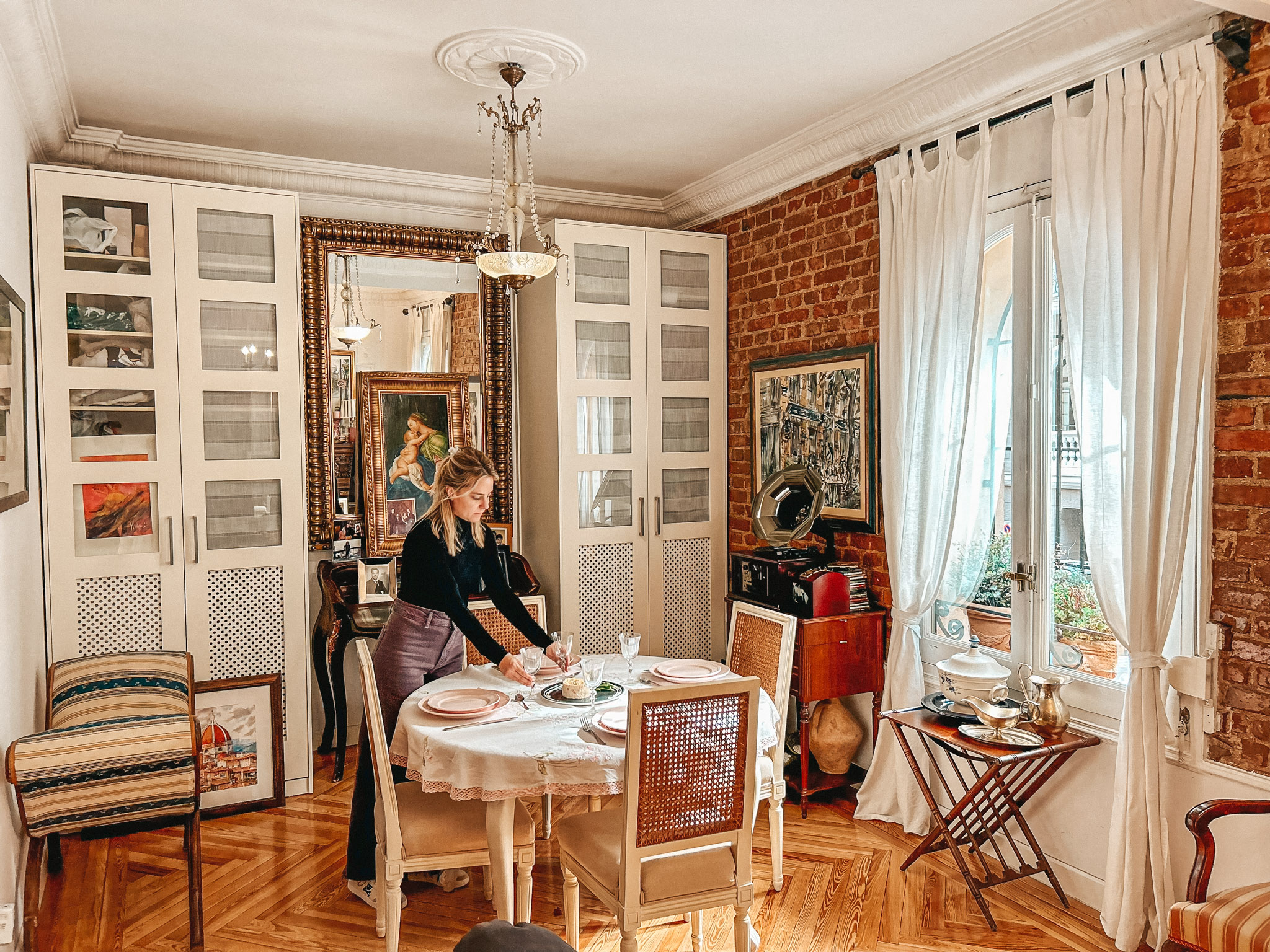
Madrid’s Finest Culinary Experience: Cristina’s apartment in the historic Los Jerónimos neighborhood offers an intimate dining experience with tapas madrileñas, rabo de toro (oxtail stew), and traditional desserts. Book Here!
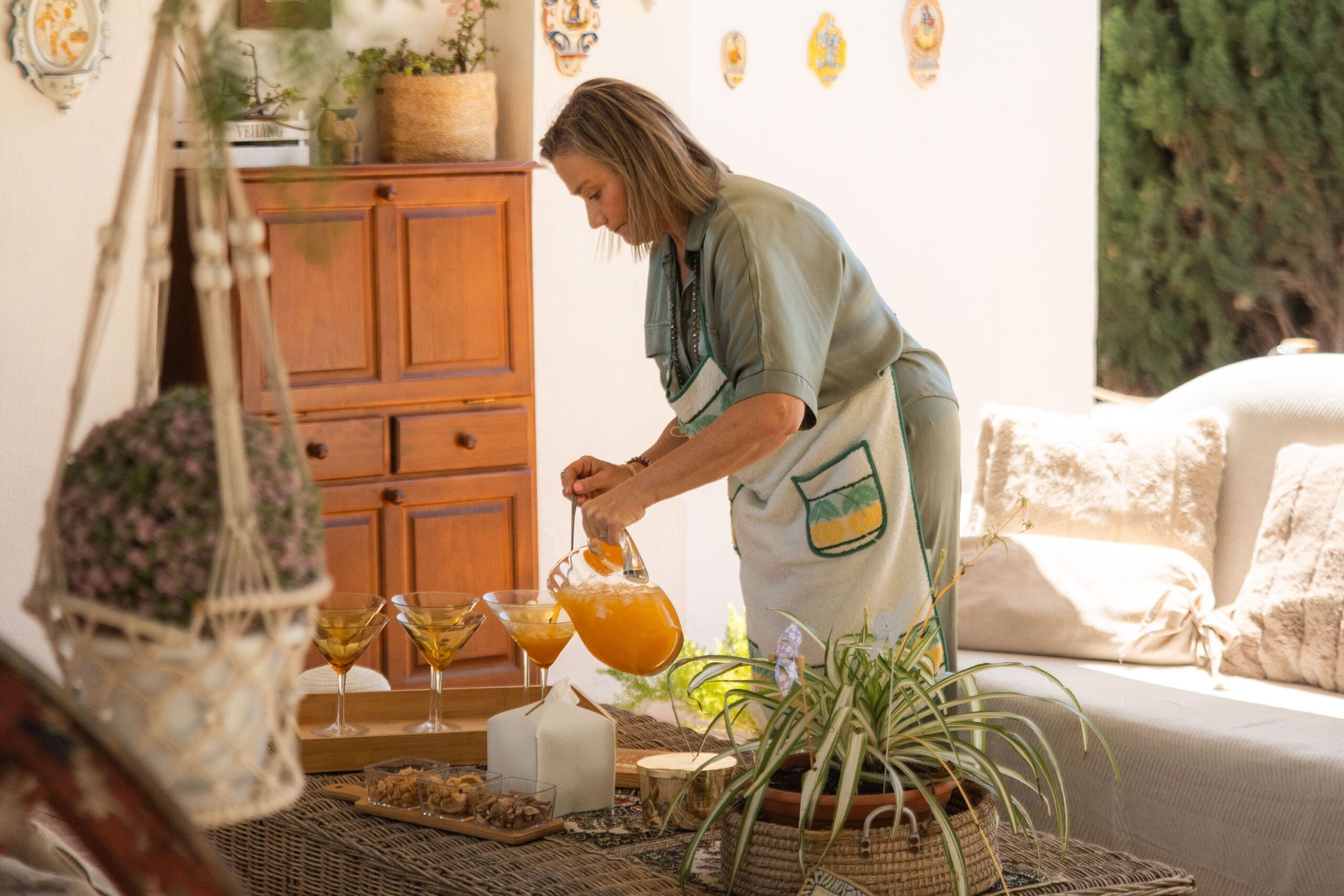
Mediterranean Delights in Valencia: At Esther’s rustic villa near the Turia River, enjoy Agua de Valencia, calamari, clams, and lobster rice, with a tranquil backdrop of orange groves in a rural house in Valencia Book Here.
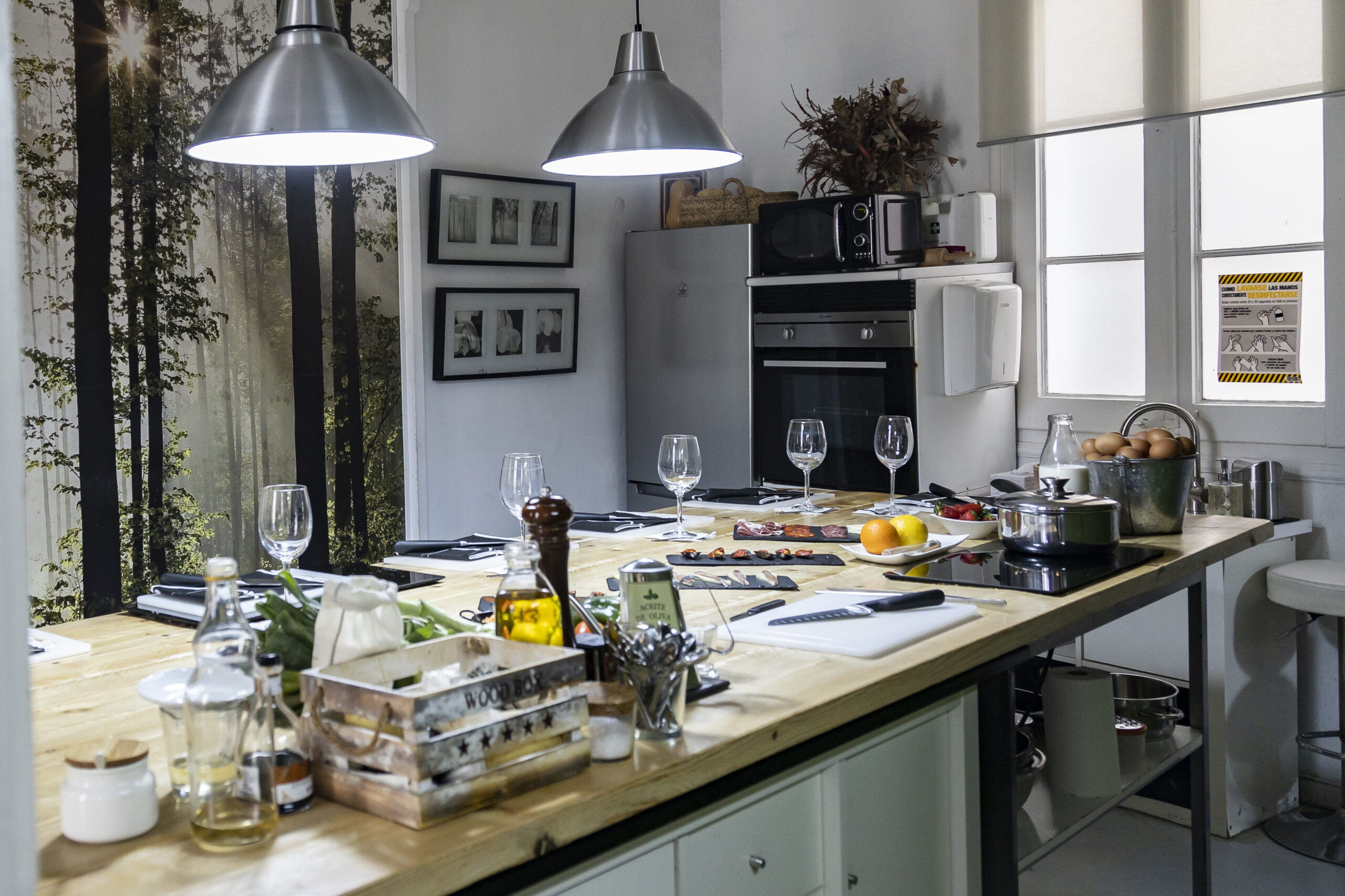
Private Tapas Feast in Barcelona: Alfredo and Maria Angeles offer a Mediterranean cuisine experience with traditional tapas menu and fine wines in her home. Clearly an incredible place to eat next to La Boquería Market. More Here!
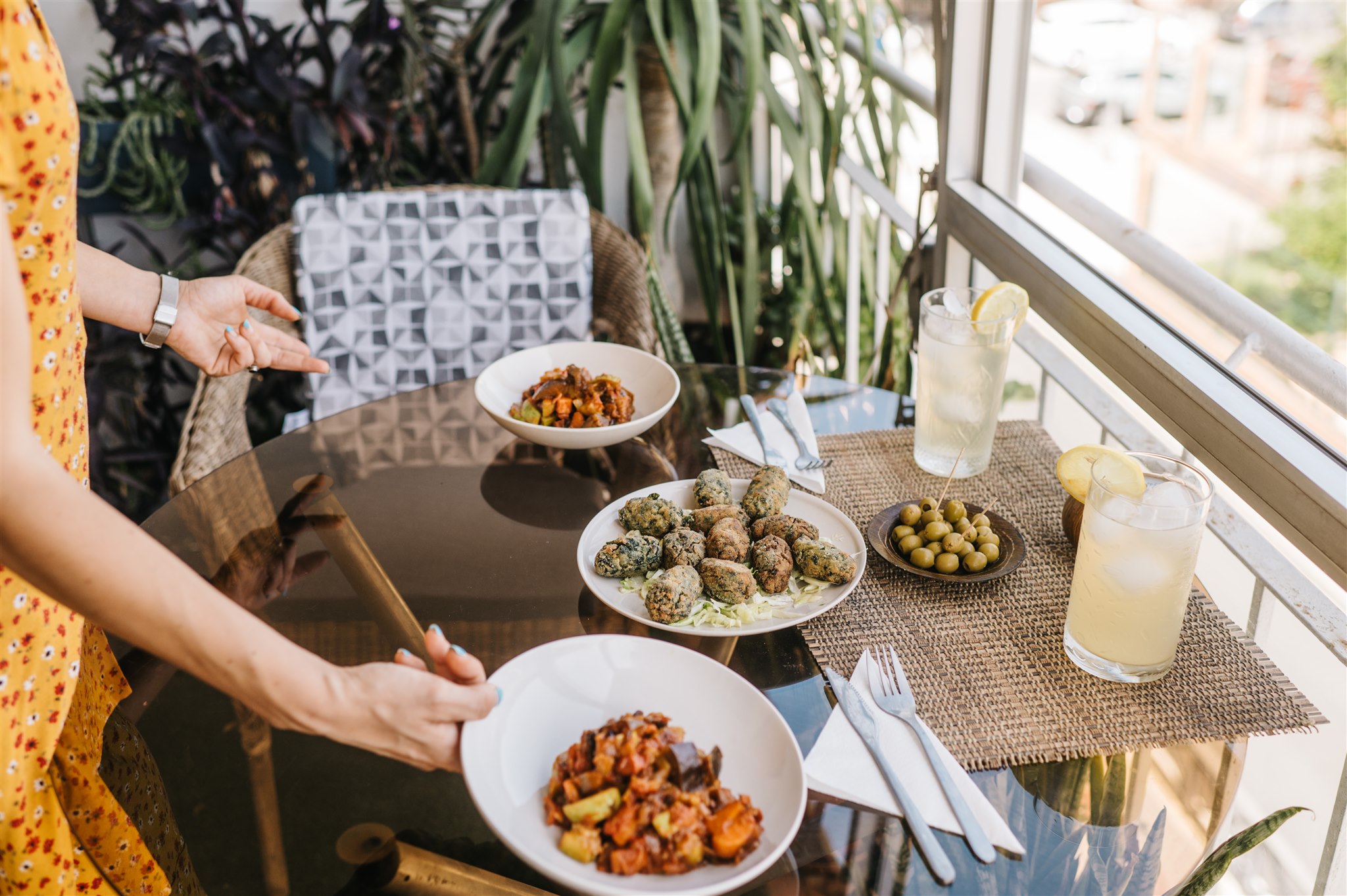
Vegan Twist in Seville: Sara’s apartment in Seville’s Macarena neighborhood provides a fusion of traditional and vegan Spanish dishes, perfect for vegetarians and vegans. More Here!
Festivals and Food Events
Spain hosts numerous food festivals and events throughout the year. Some highlights include:
La Tomatina in Buñol: A massive tomato fight that attracts thousands of participants from around the world. Held annually on the last Wednesday of August, this festival involves participants throwing tomatoes at each other, creating a fun and messy celebration. It’s a unique way to experience Spanish culture and community spirit.

San Sebastián Gastronomika: A prestigious culinary conference featuring top chefs from around the world. This event, held in the beautiful coastal city of San Sebastián, showcases the latest trends in gastronomy and offers workshops, tastings, and presentations from renowned culinary experts. It’s an essential event for food professionals and enthusiasts alike.
Feria de Abril in Seville: A spring fair with plenty of local food, drinks, and flamenco music. Celebrated two weeks after Easter, this vibrant festival features colorful “casetas” (tents), horse parades, and traditional Andalusian attire. Furthermore, visitors can indulge in delicious tapas, sherry, and other regional specialties while enjoying lively flamenco performances.

Best Cities for Food Lovers
Spain boasts several cities known for their vibrant food scenes:
Barcelona: Offers a mix of traditional Catalan cuisine and innovative modern dishes.
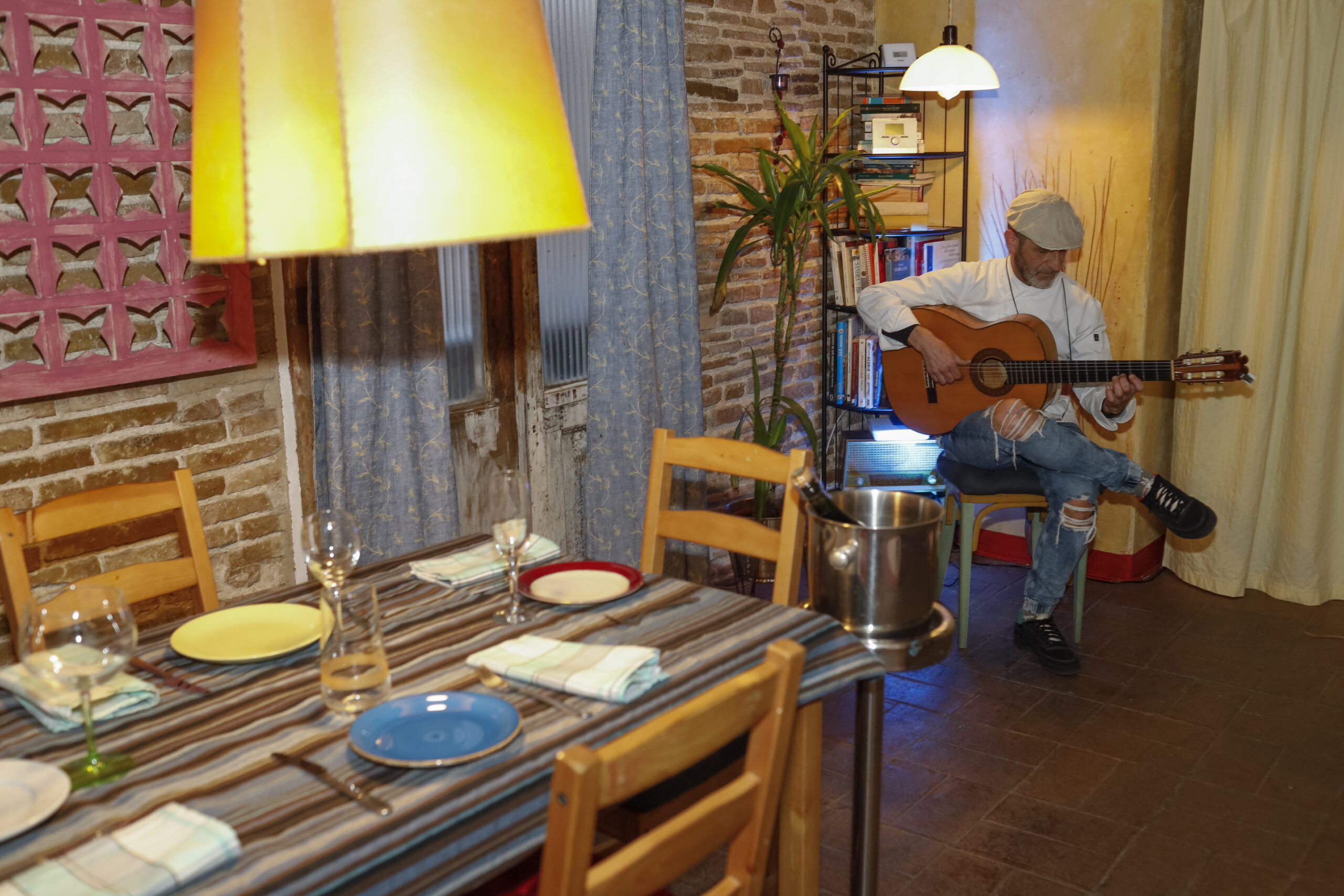
Madrid: Home to a diverse range of restaurants, from tapas bars to high-end dining.
San Sebastián: Famous for its pintxos bars and Michelin-starred restaurants.
Valencia: Known for its paella and fresh seafood.
Seafood Specialties
Spain’s coastal regions are famous for their seafood. Dishes like pulpo a la gallega (Galician octopus), gambas al ajillo (garlic shrimp), and calamares a la romana (fried squid) showcase the country’s rich maritime bounty.
Vegetarian and Vegan Options
While traditional Spanish cuisine is often meat-centric, there are plenty of vegetarian and vegan options available. Dishes like pisto (Spanish ratatouille), gazpacho, and escalivada are naturally vegetarian, and many restaurants now offer vegan versions of classic dishes.
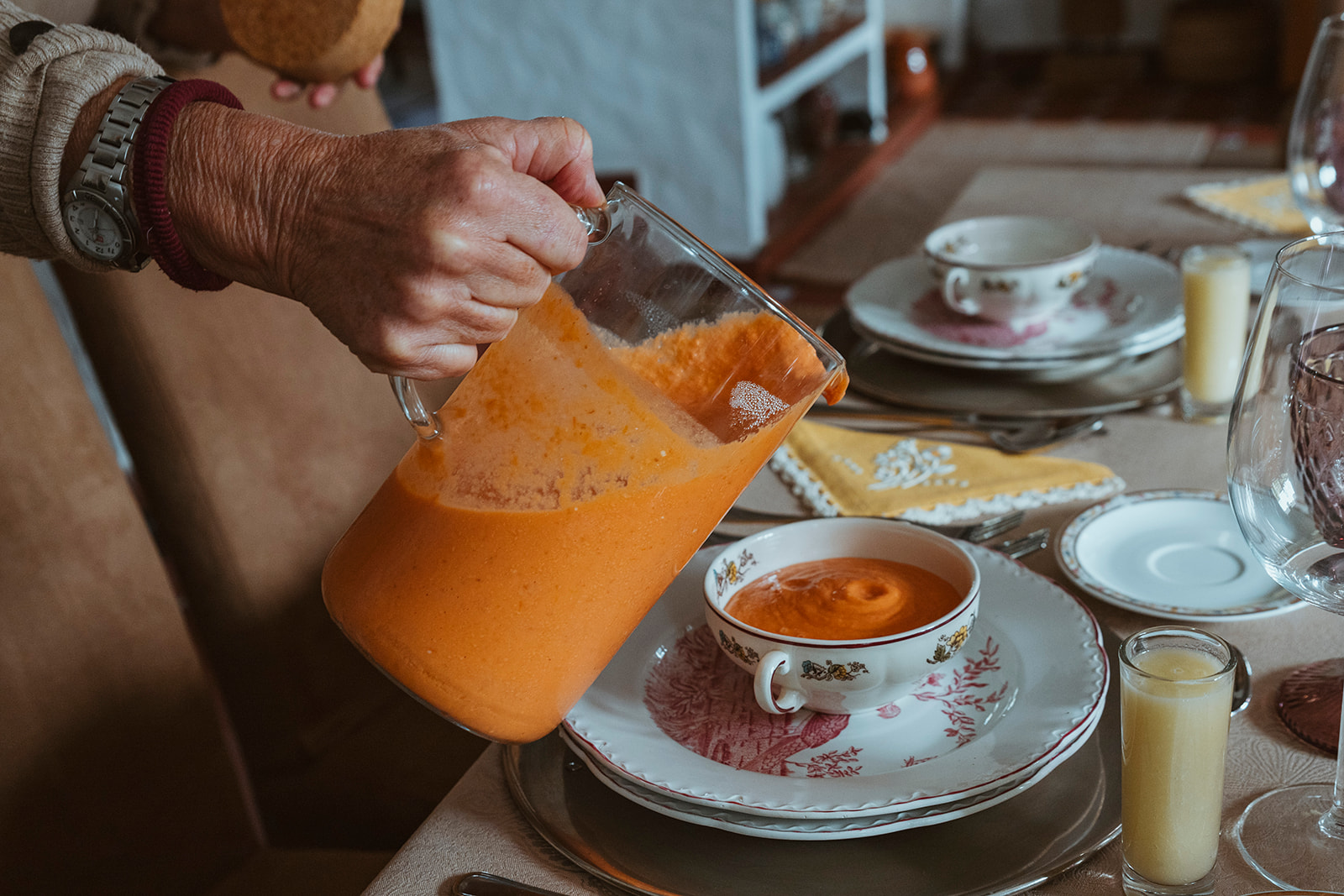
Street Food in Spain
Street food is a popular and affordable way to enjoy Spanish cuisine. Common street foods include churros con chocolate, bocadillos (sandwiches), and empanadas.
Desserts and Sweets
Finally, Spain is also known for its delicious desserts. Some must-try sweets include tarta de Santiago (almond cake), flan, and turrón (nougat).
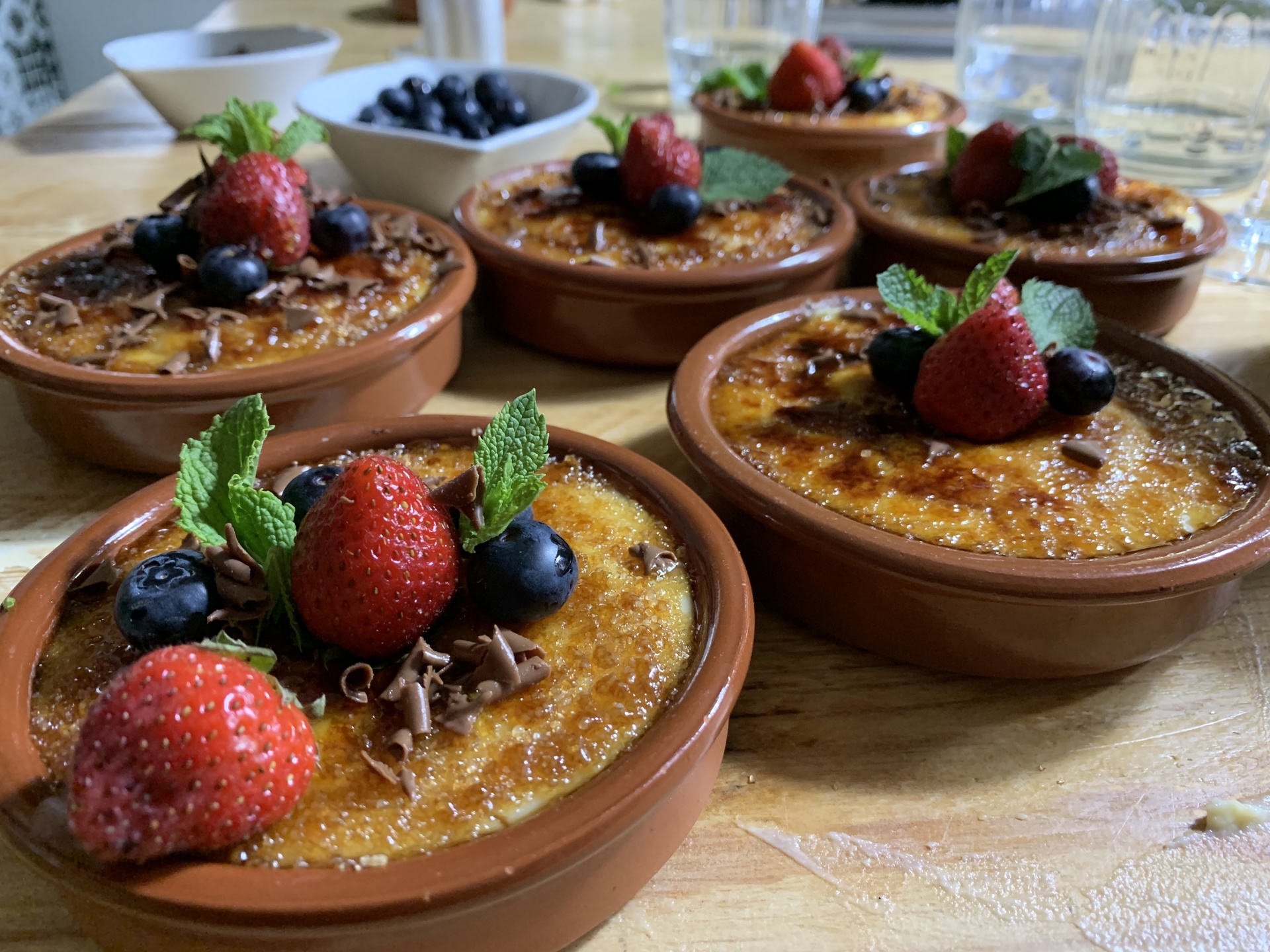
When planning your culinary trip to Spain, consider joining a guided food tour or workshop with SAZON THE FOLK COOK. Their local expertise will ensure you have an unforgettable experience, discovering the true flavors and culinary traditions of Spain.






